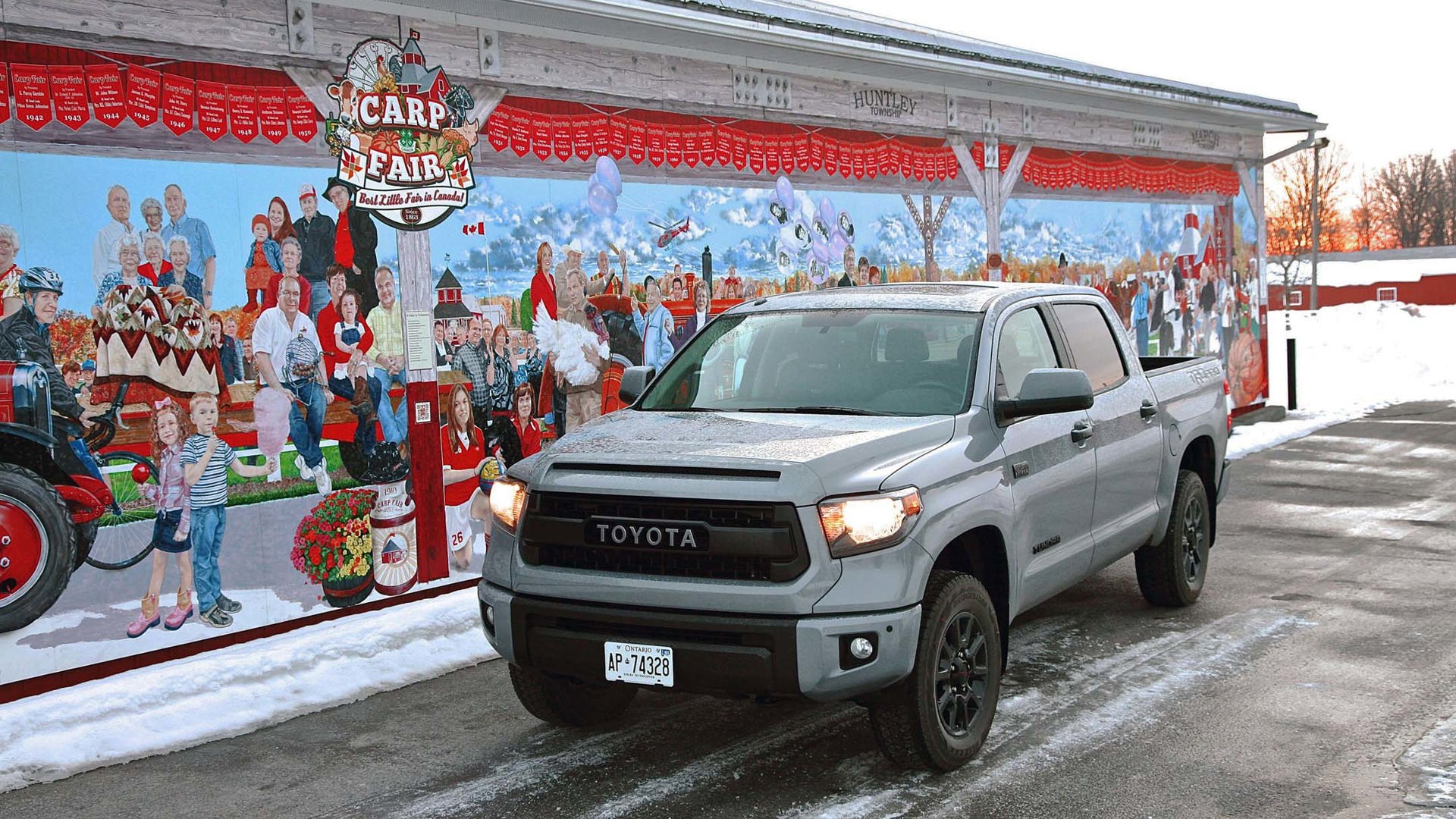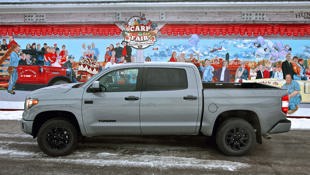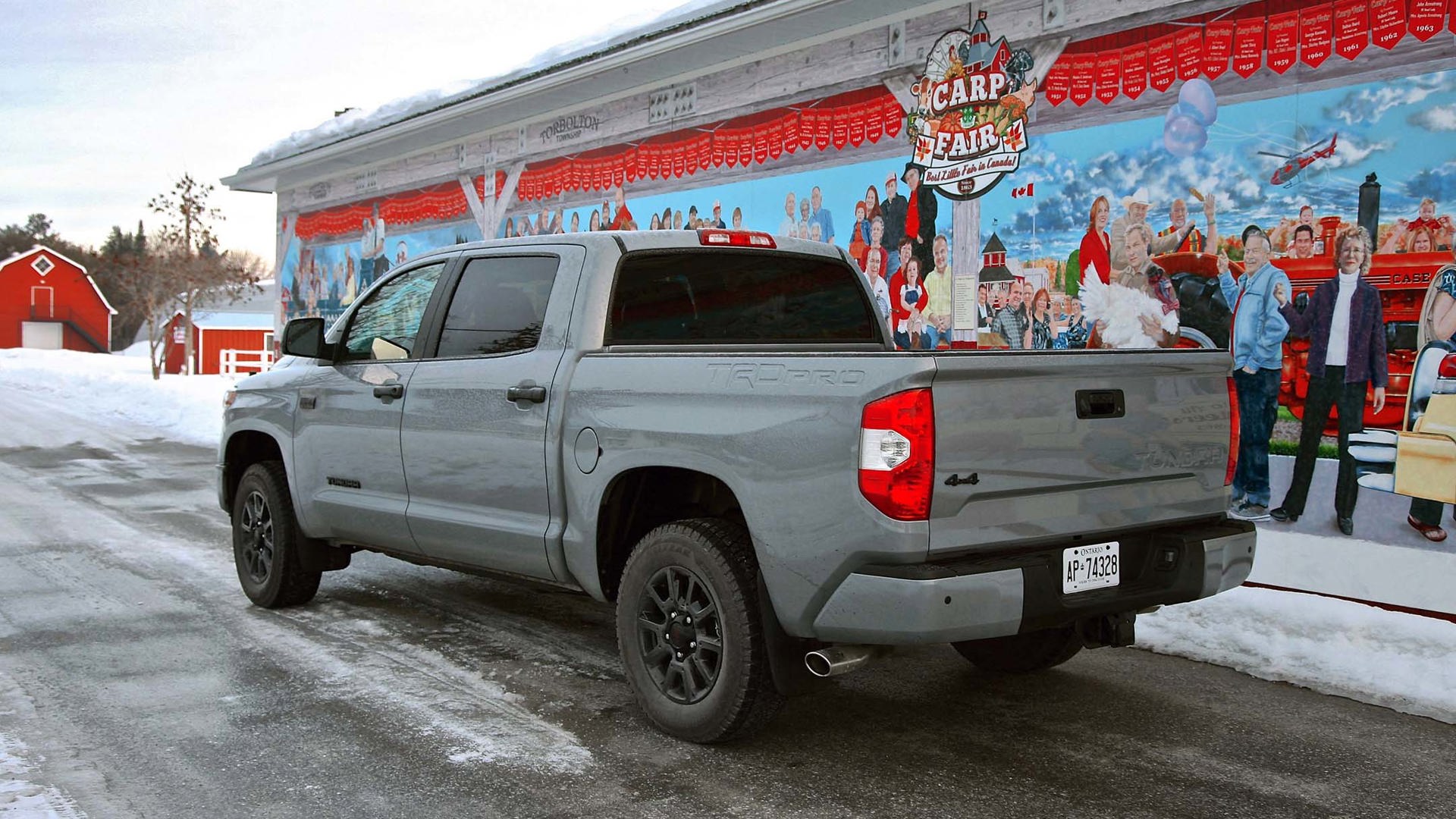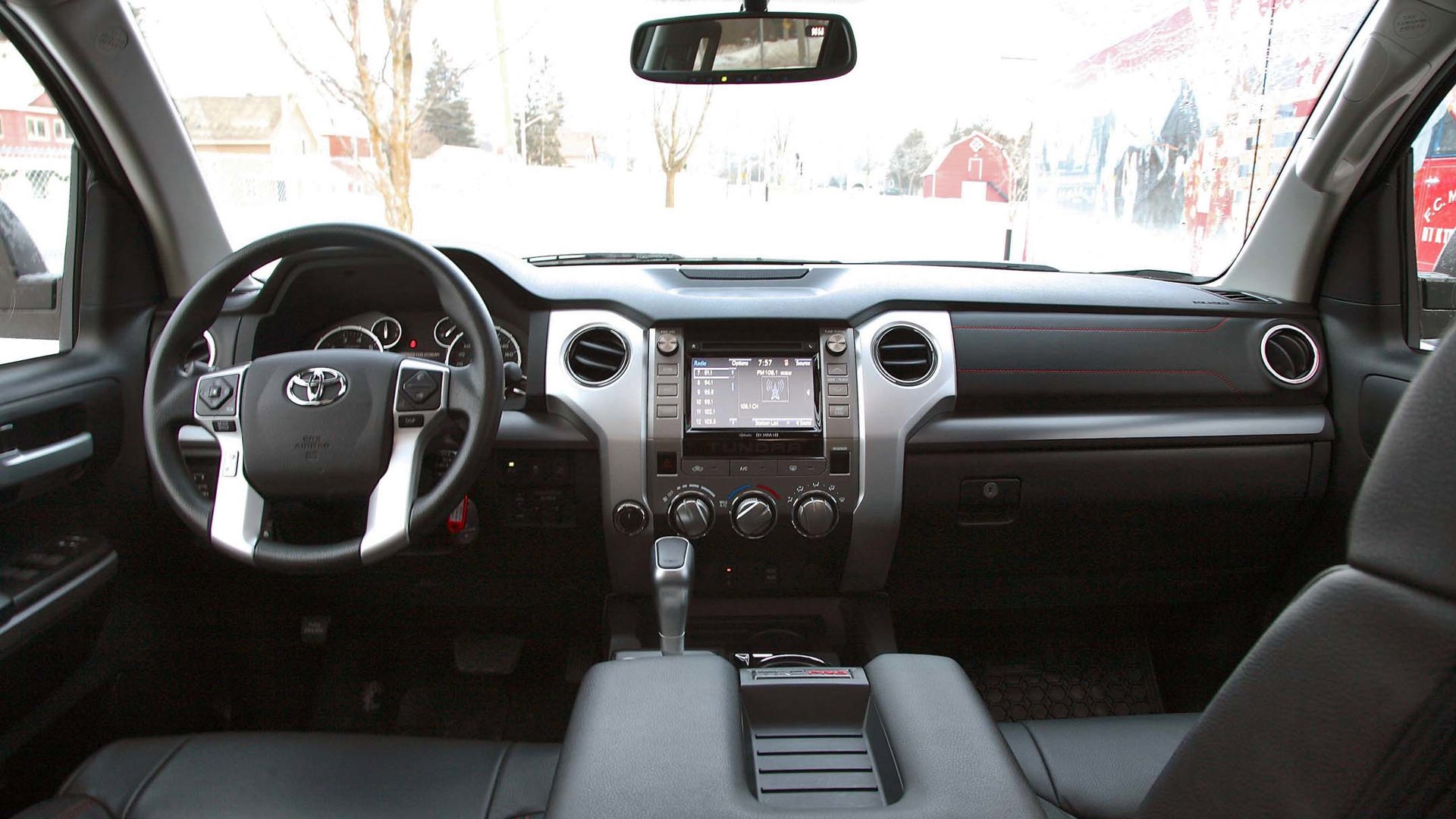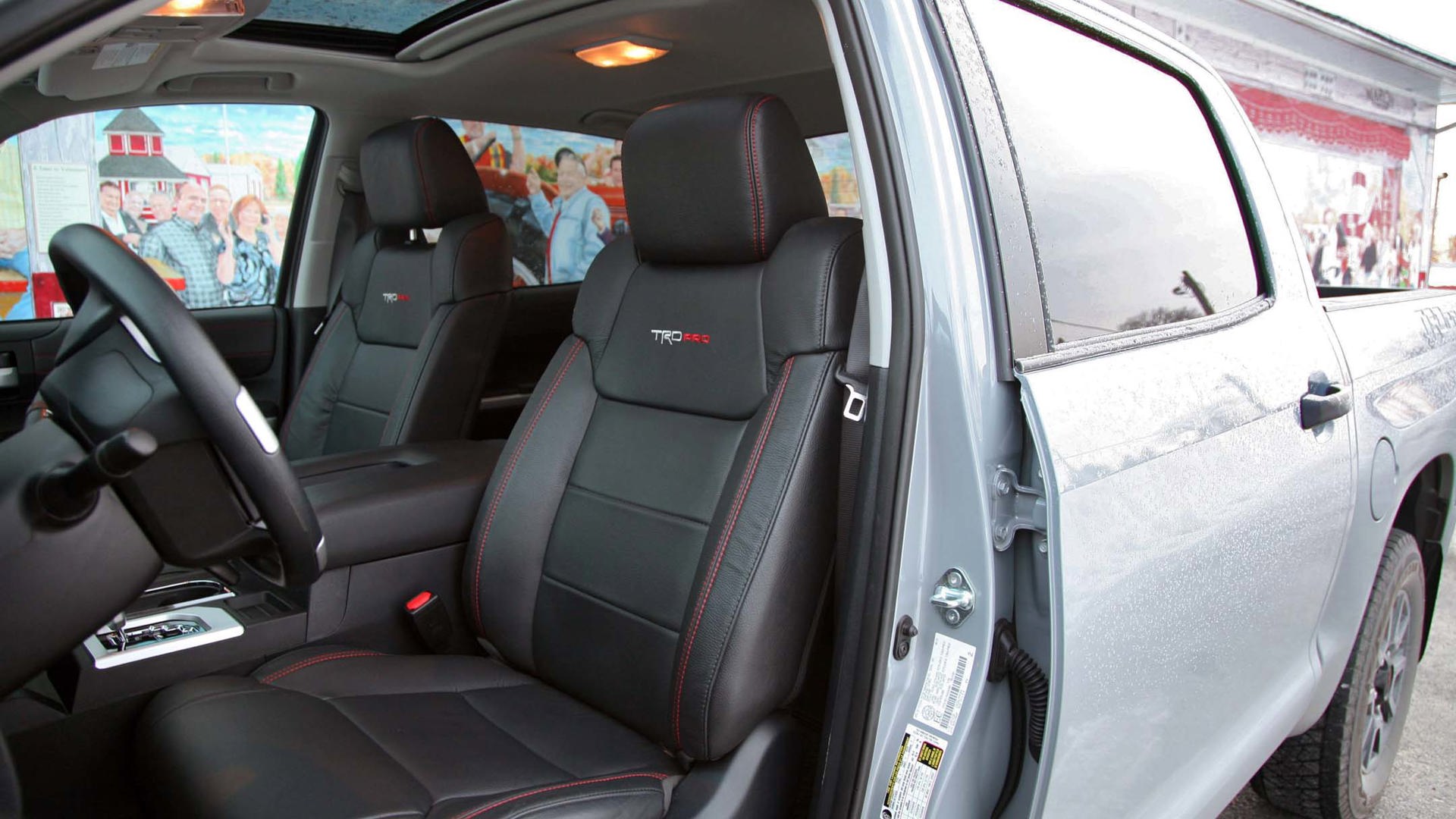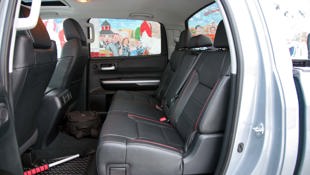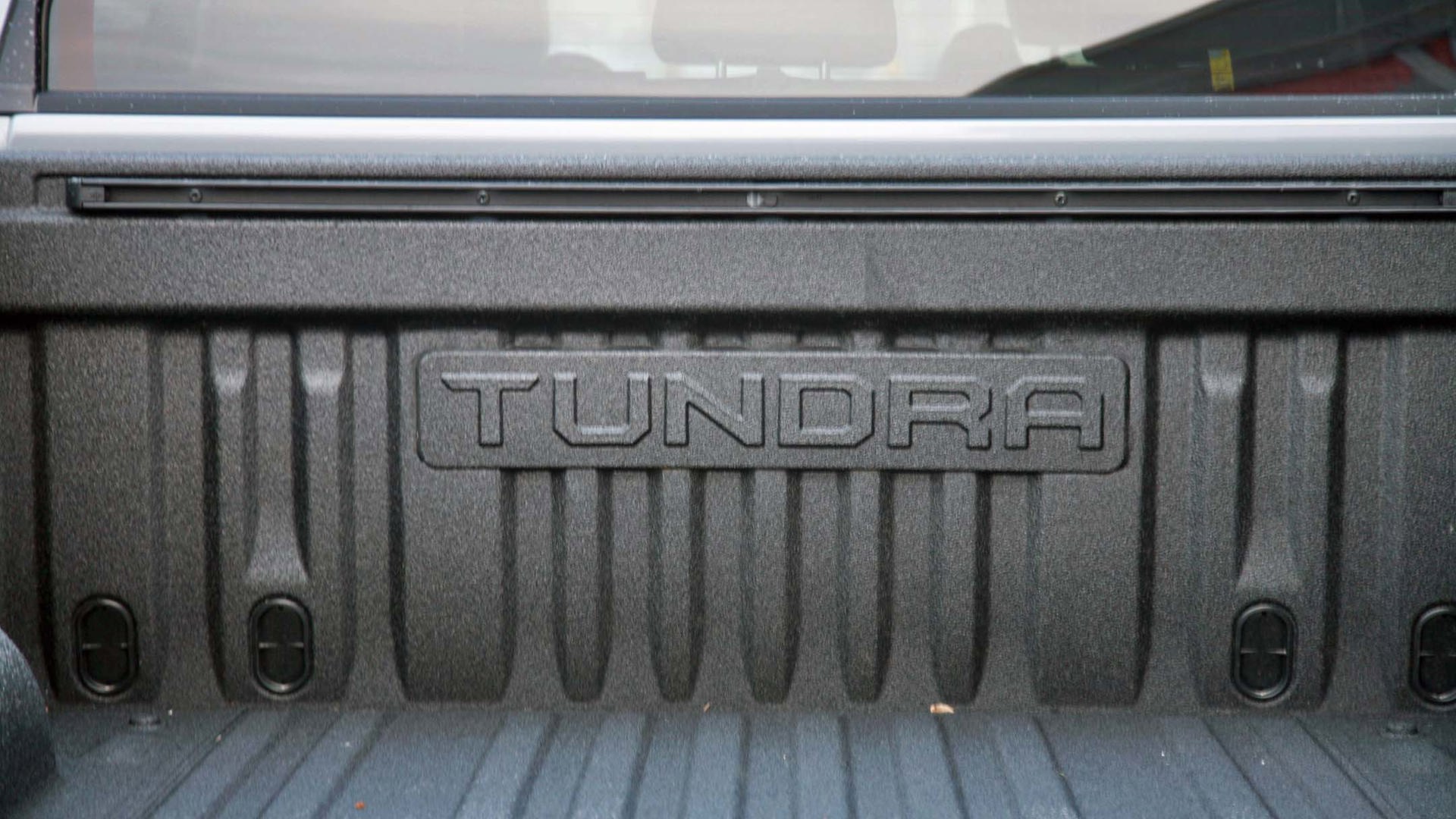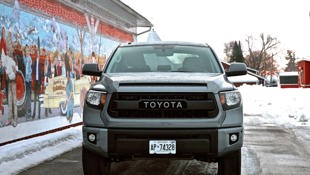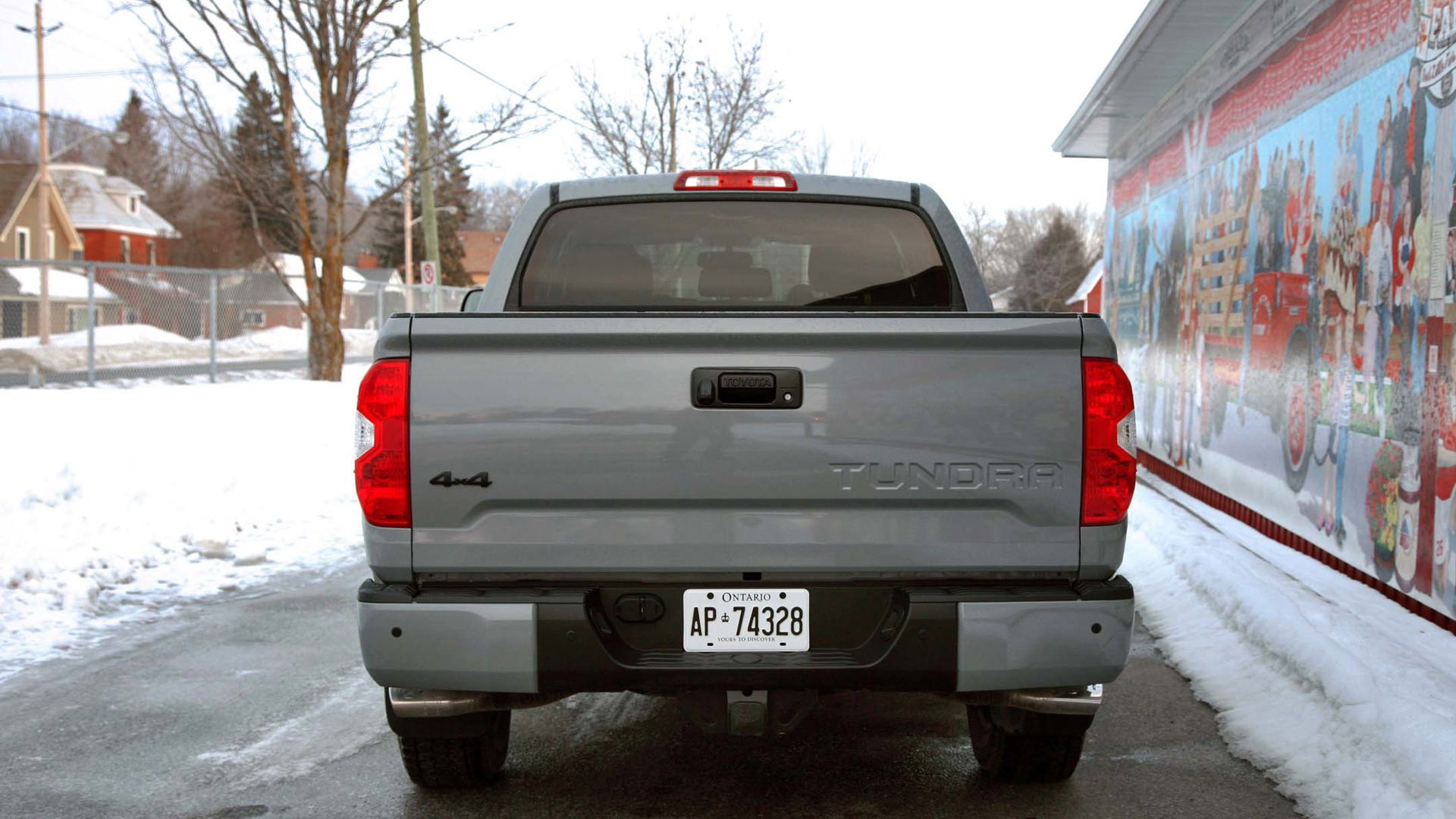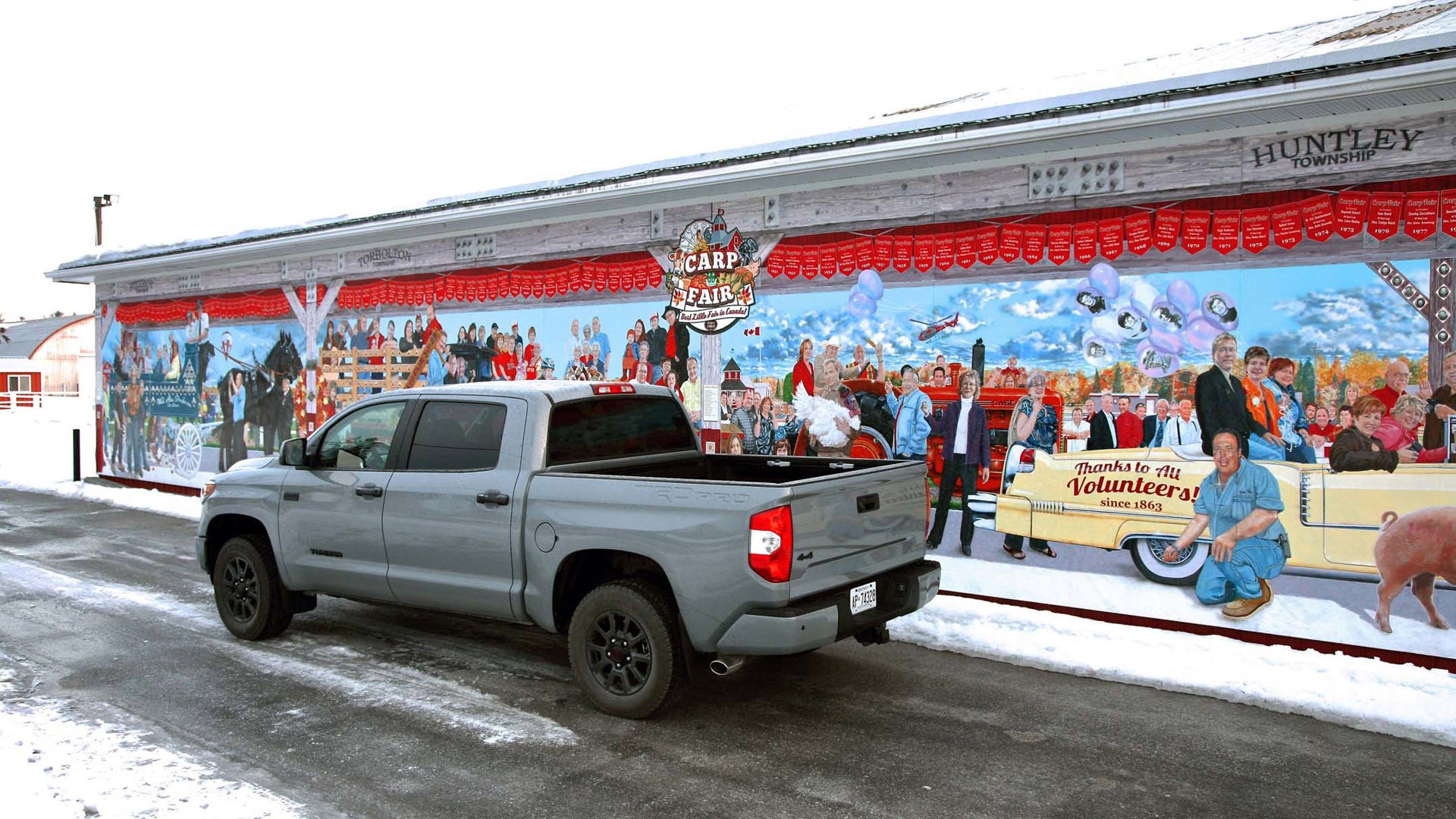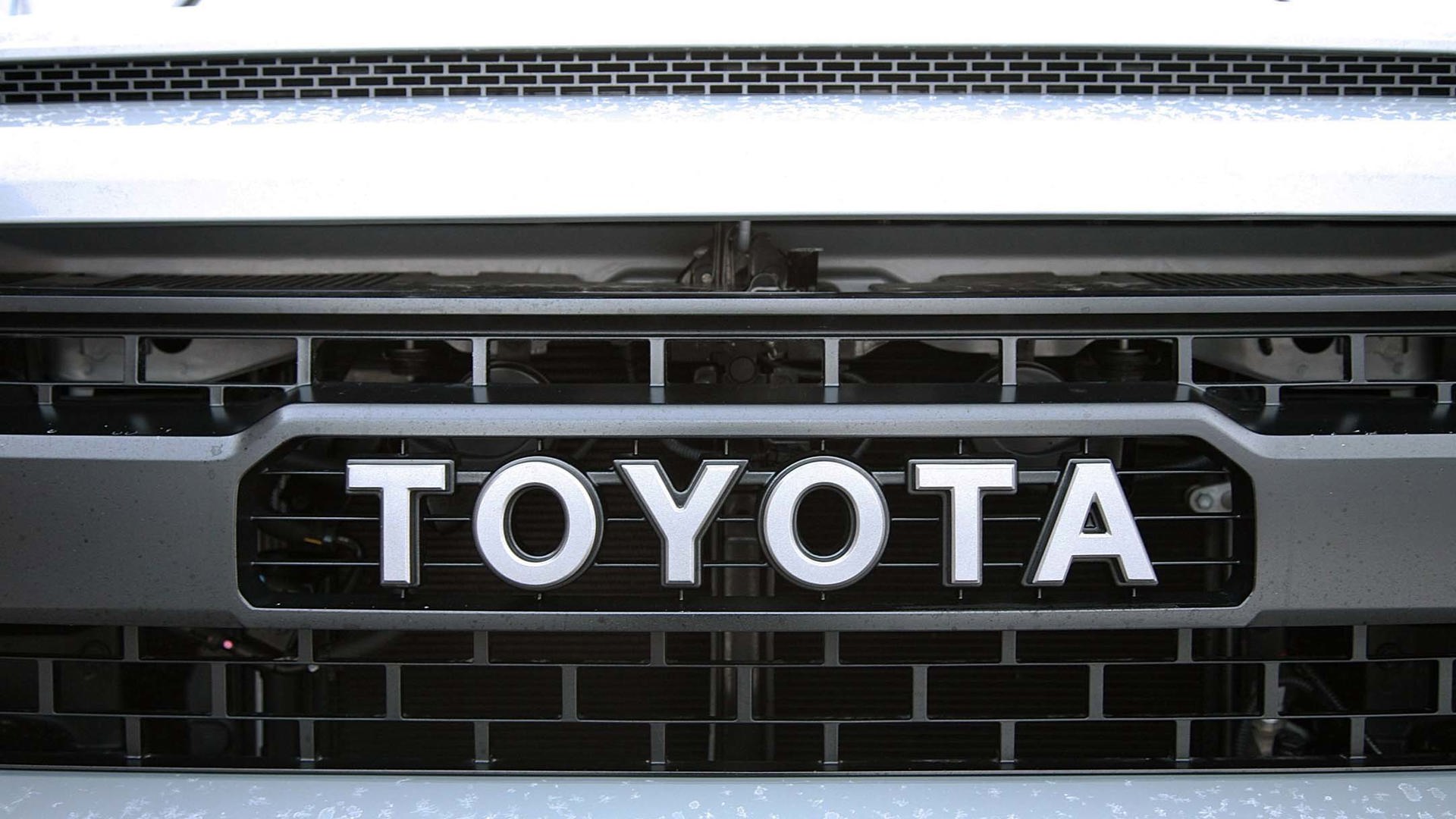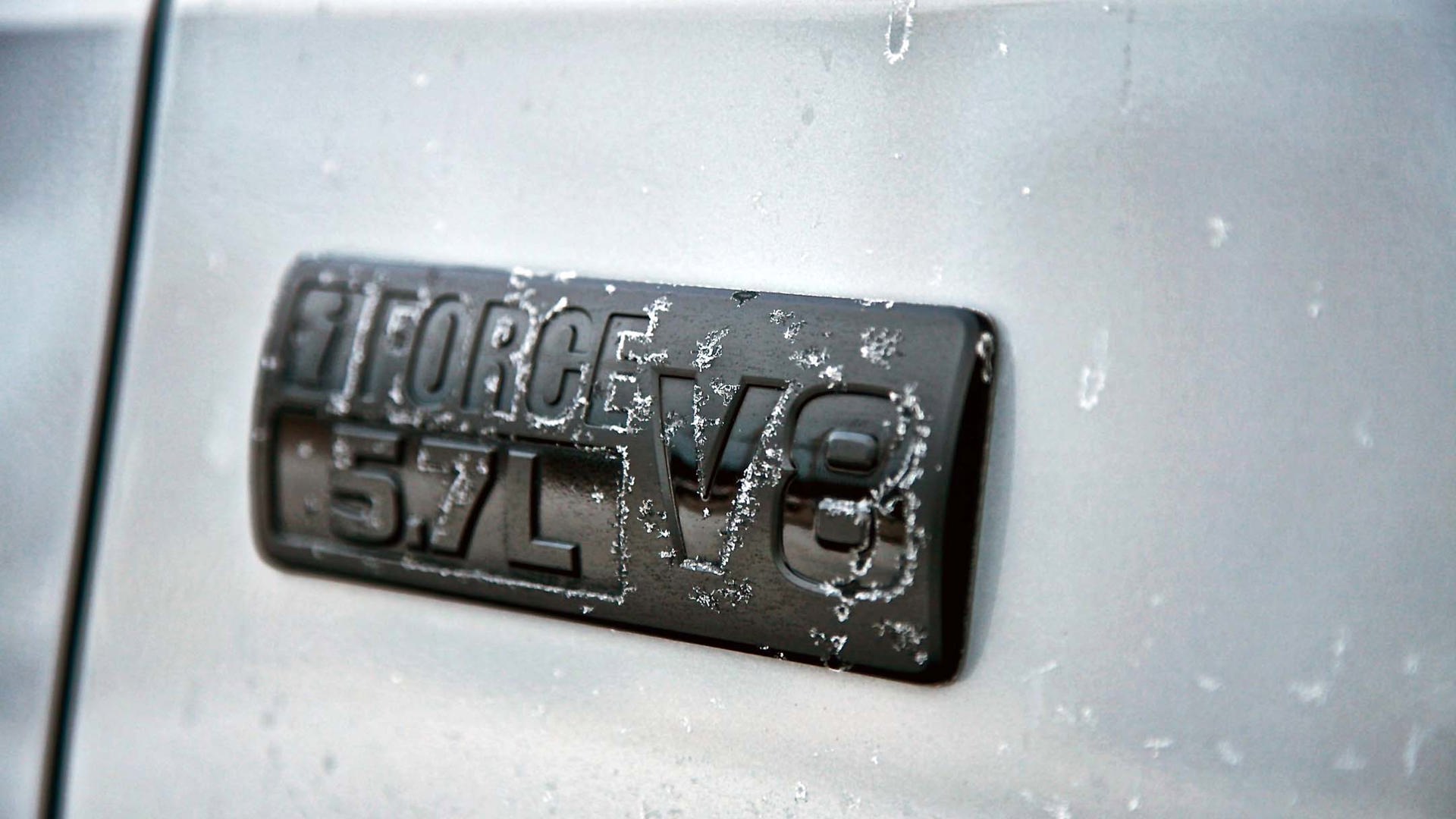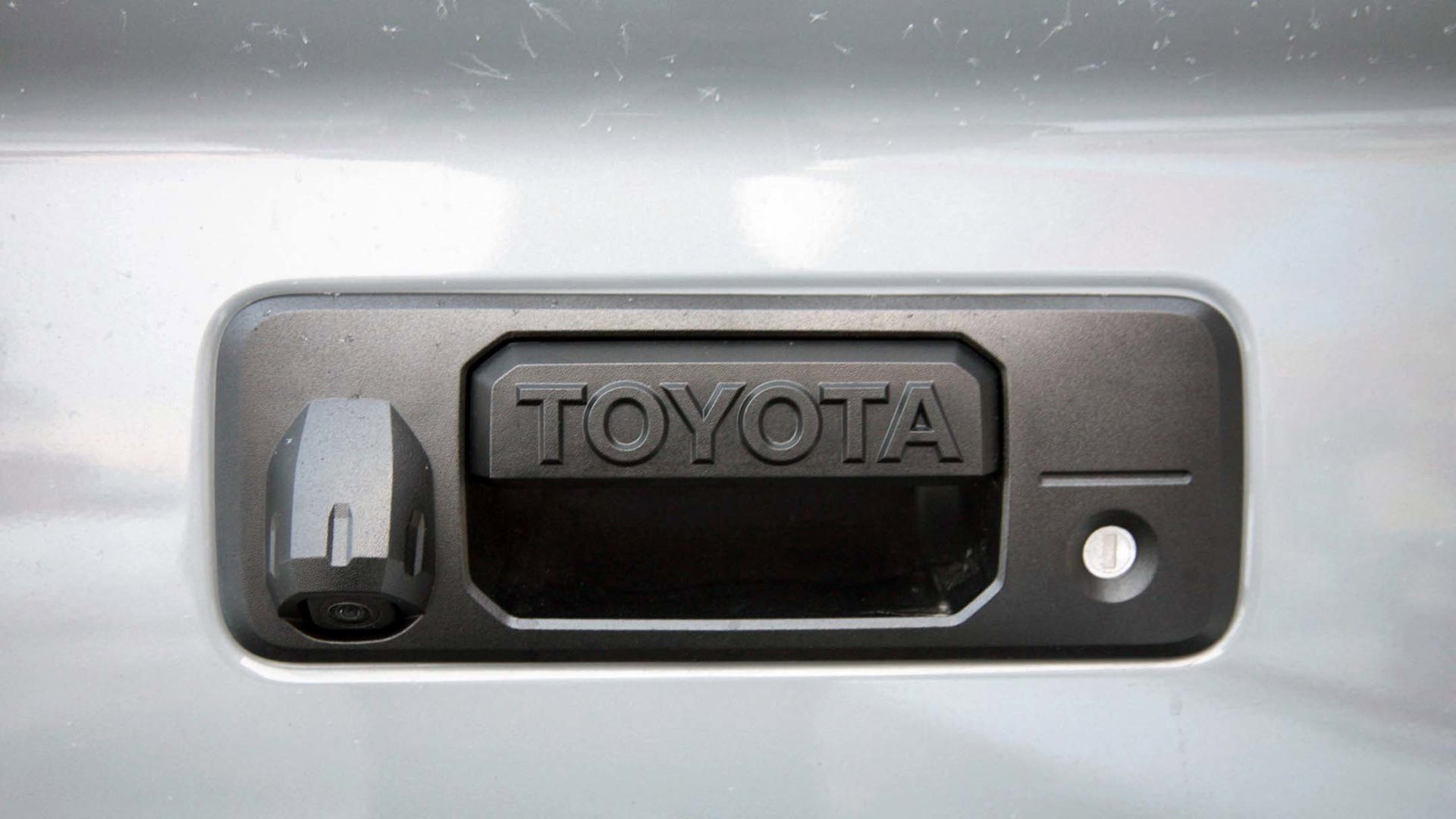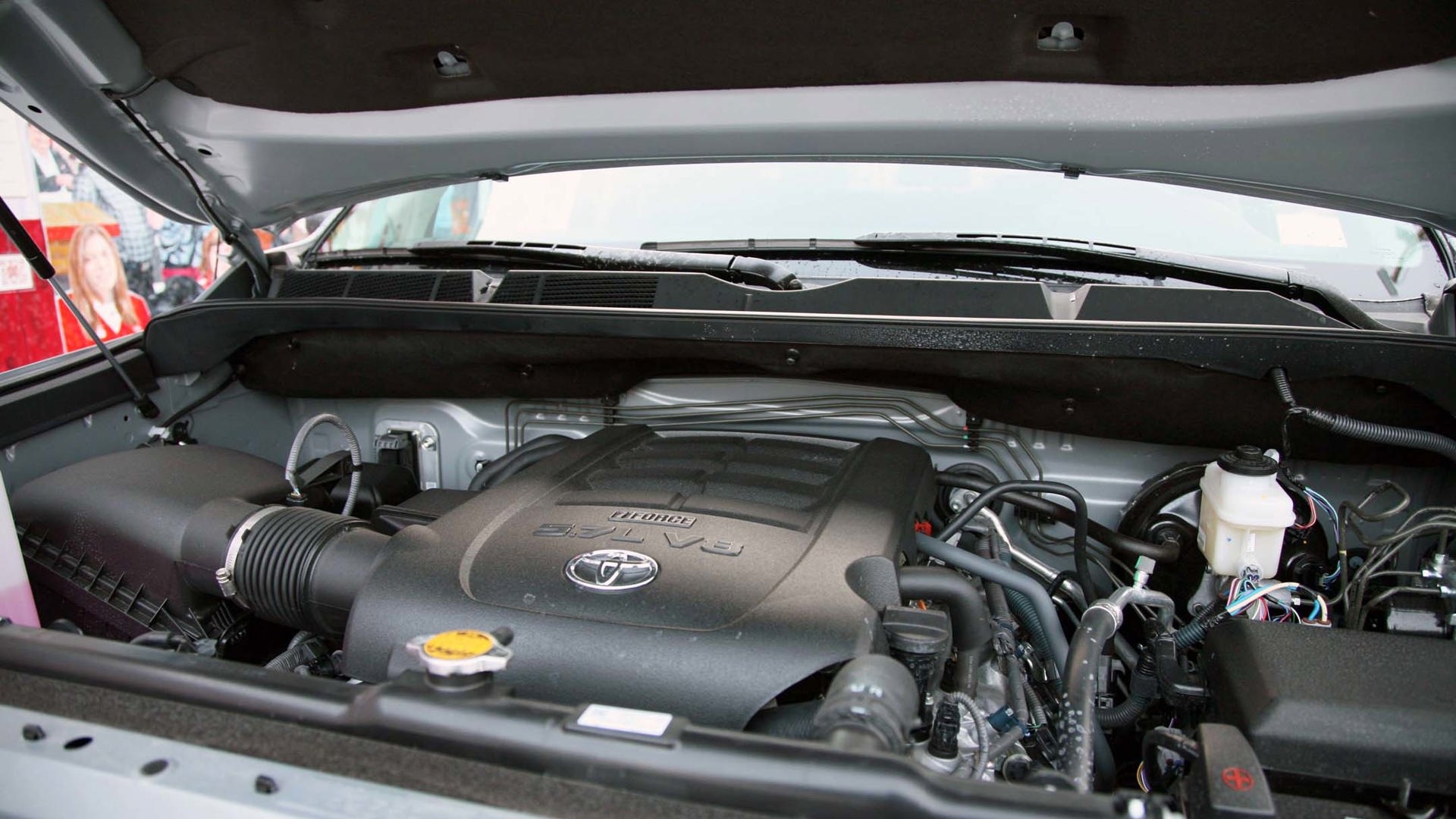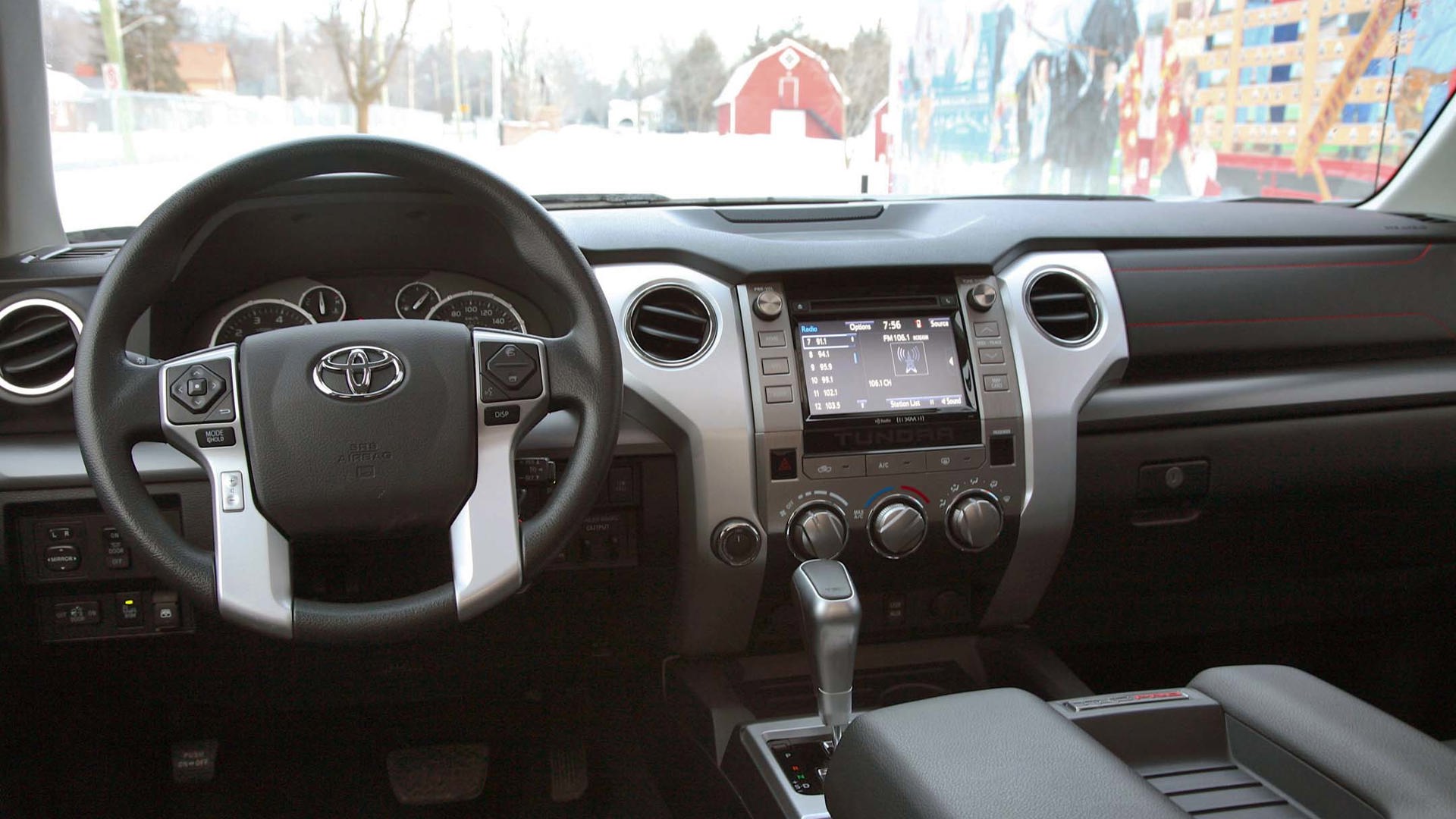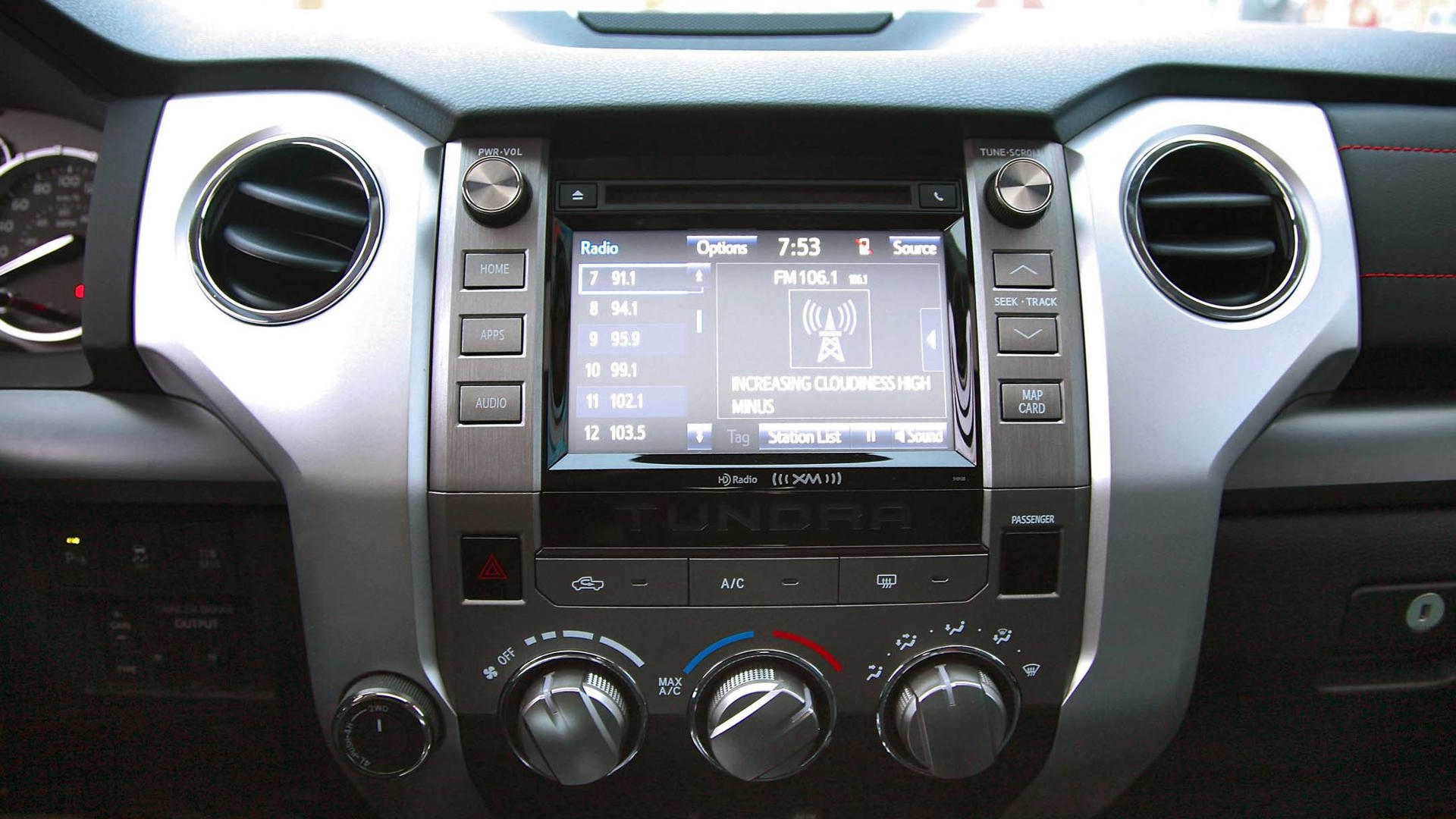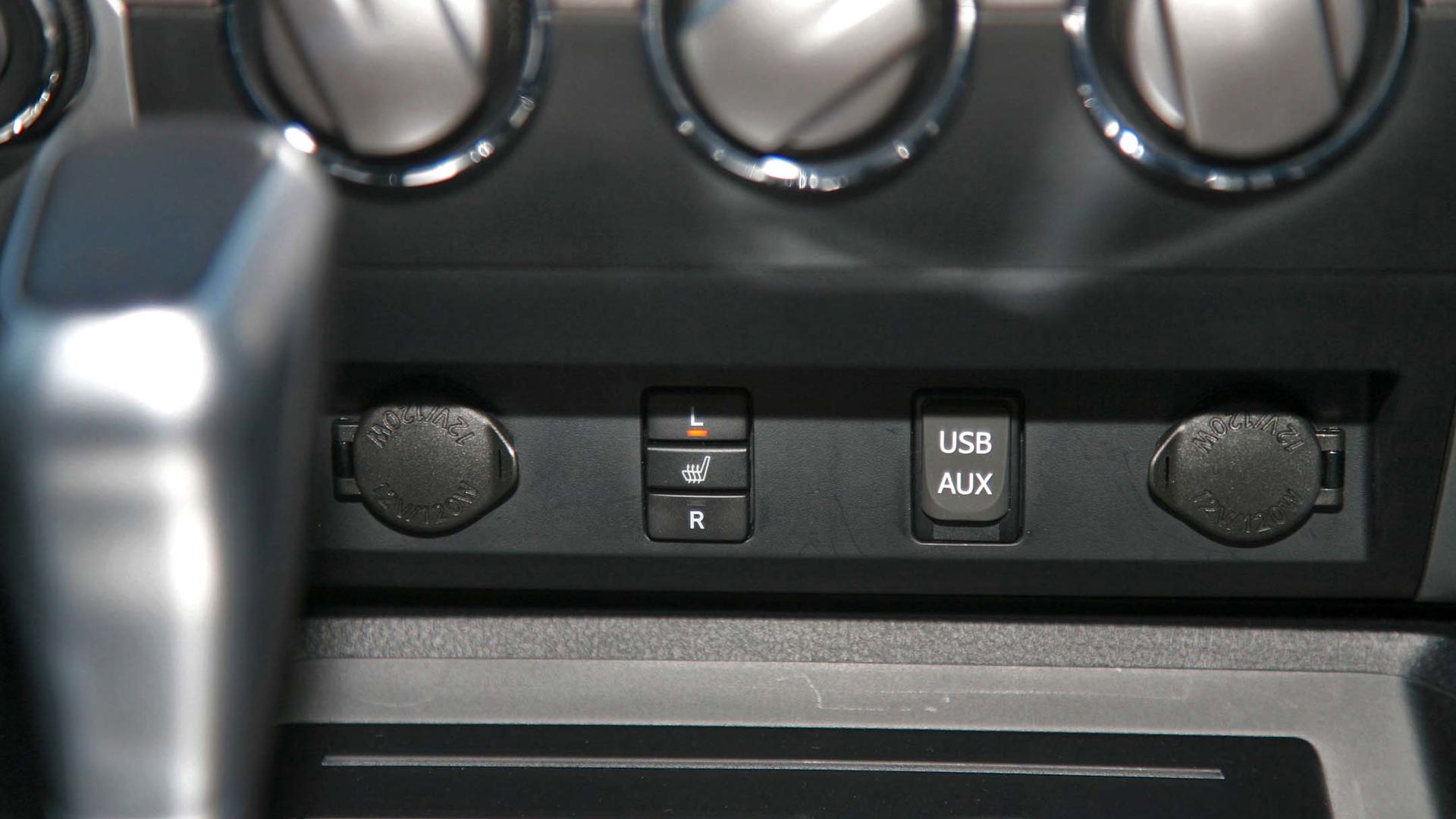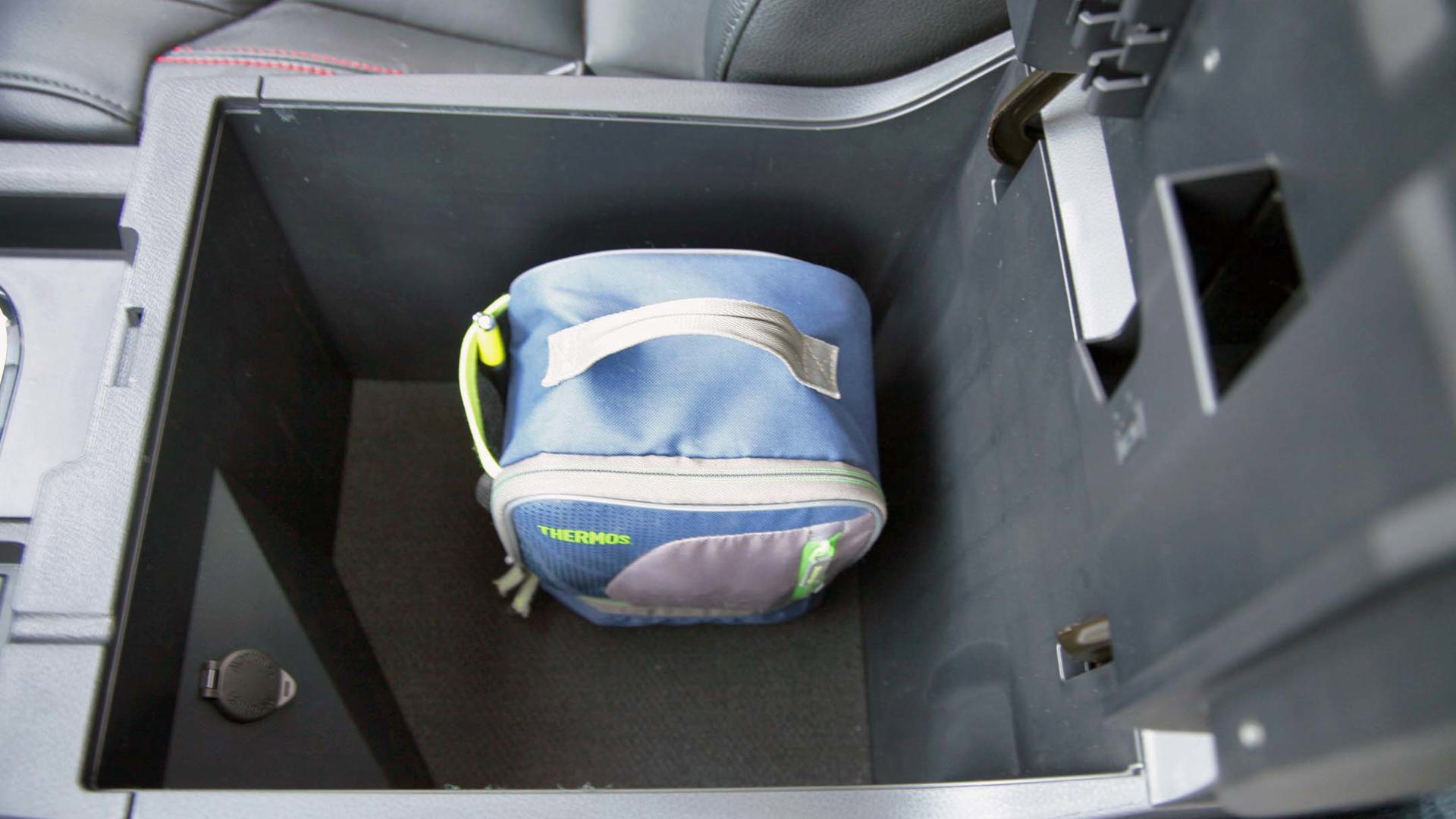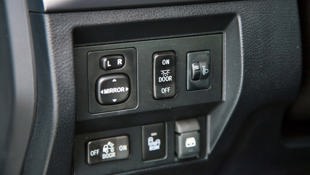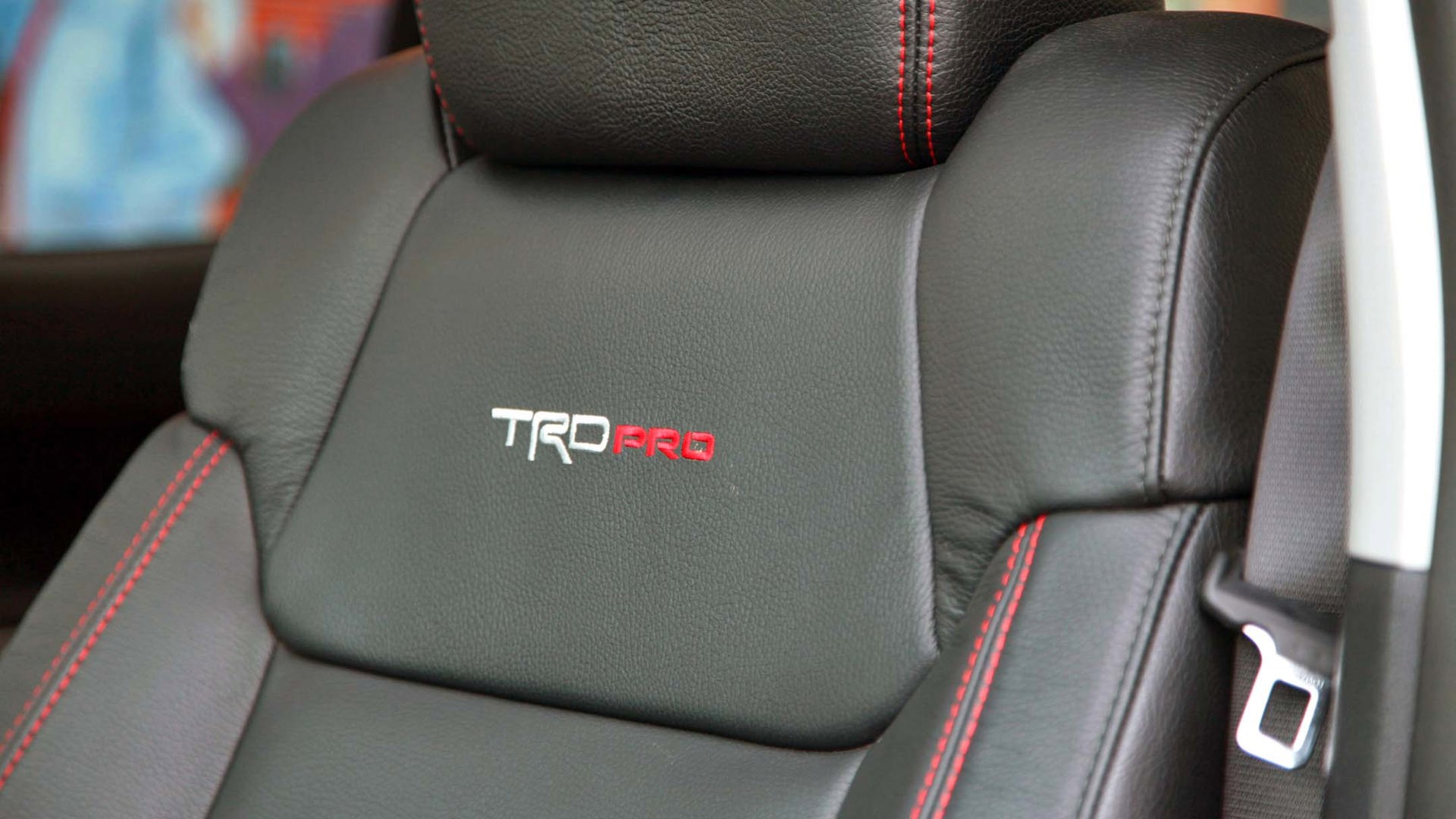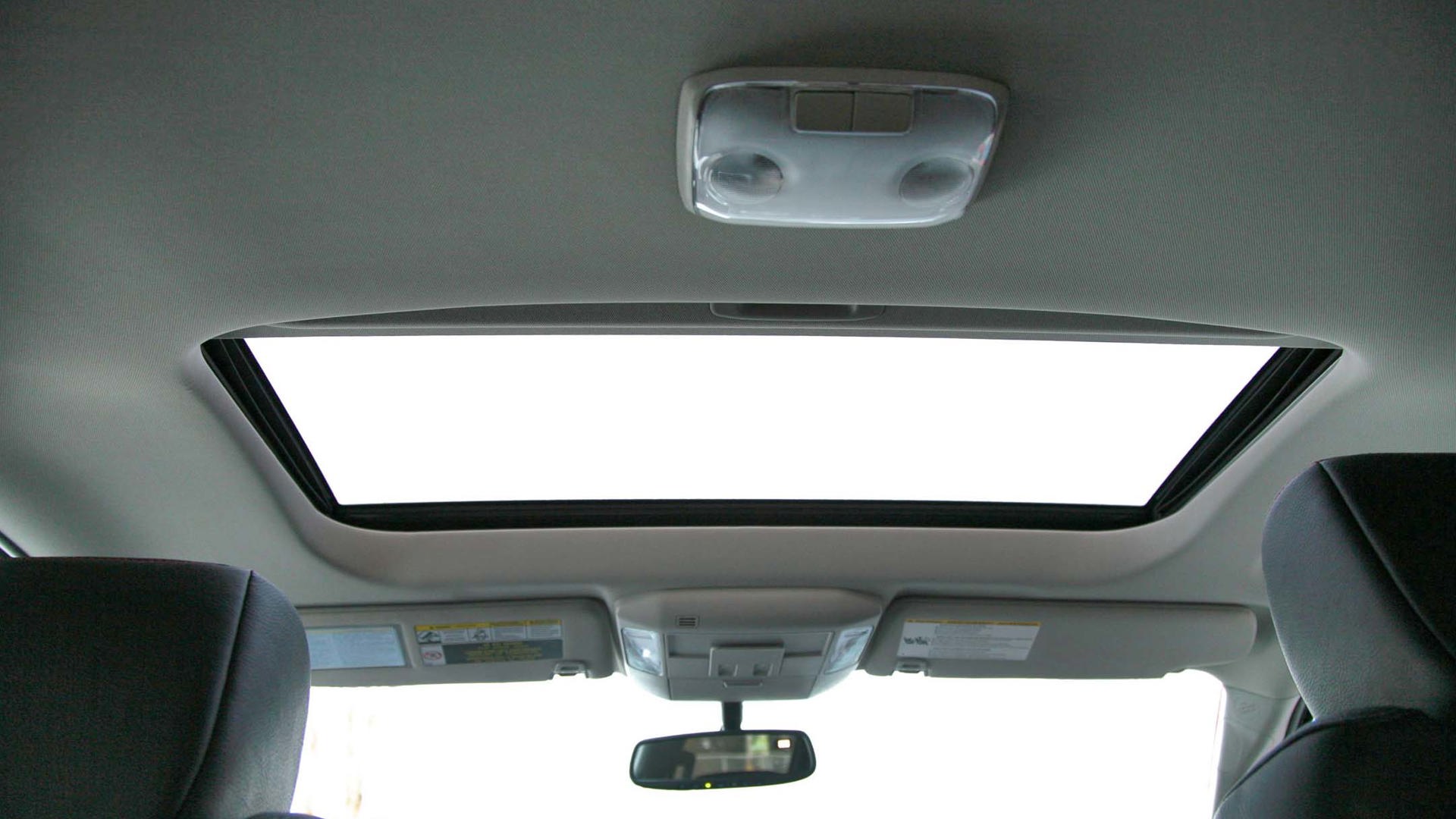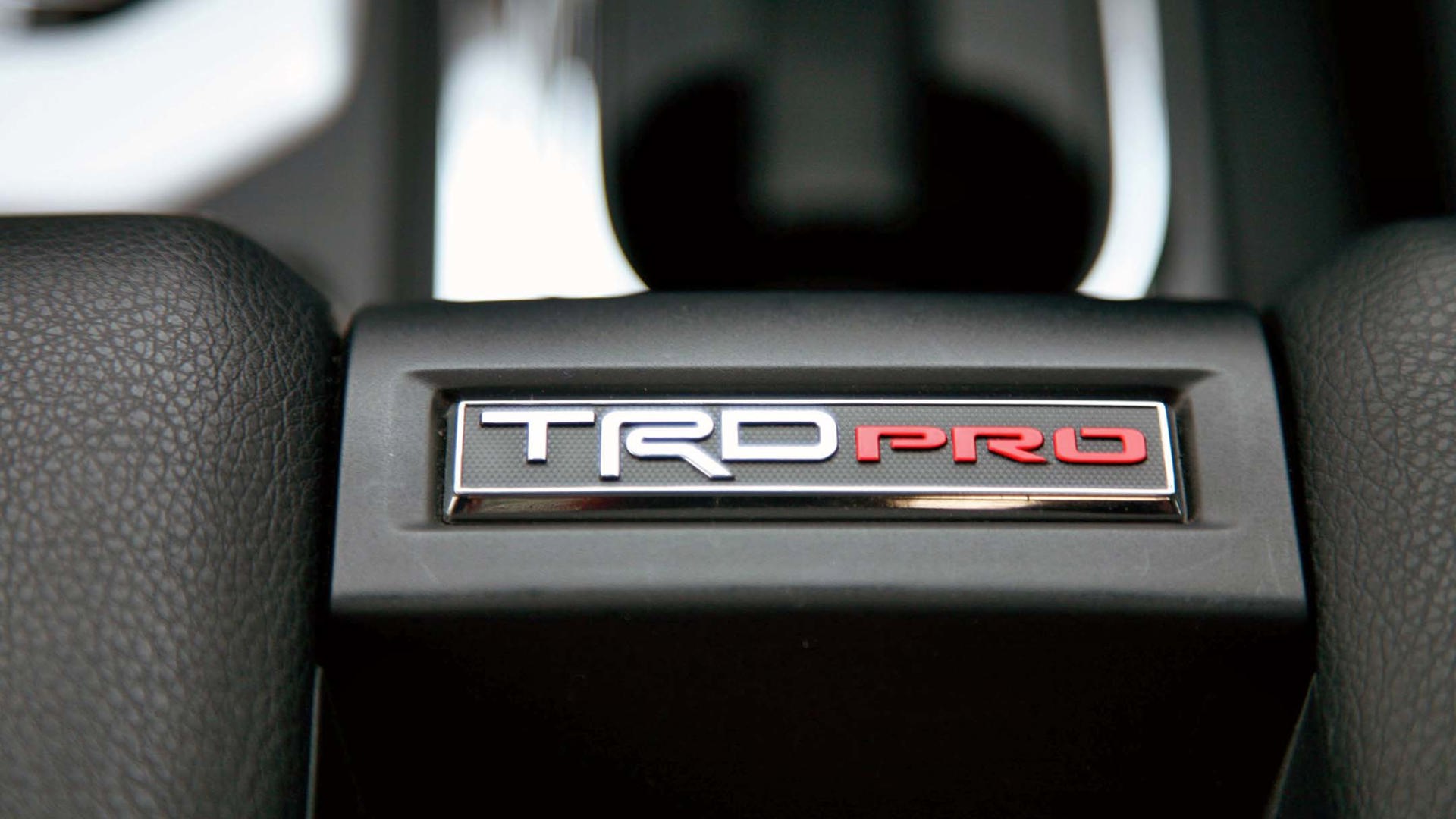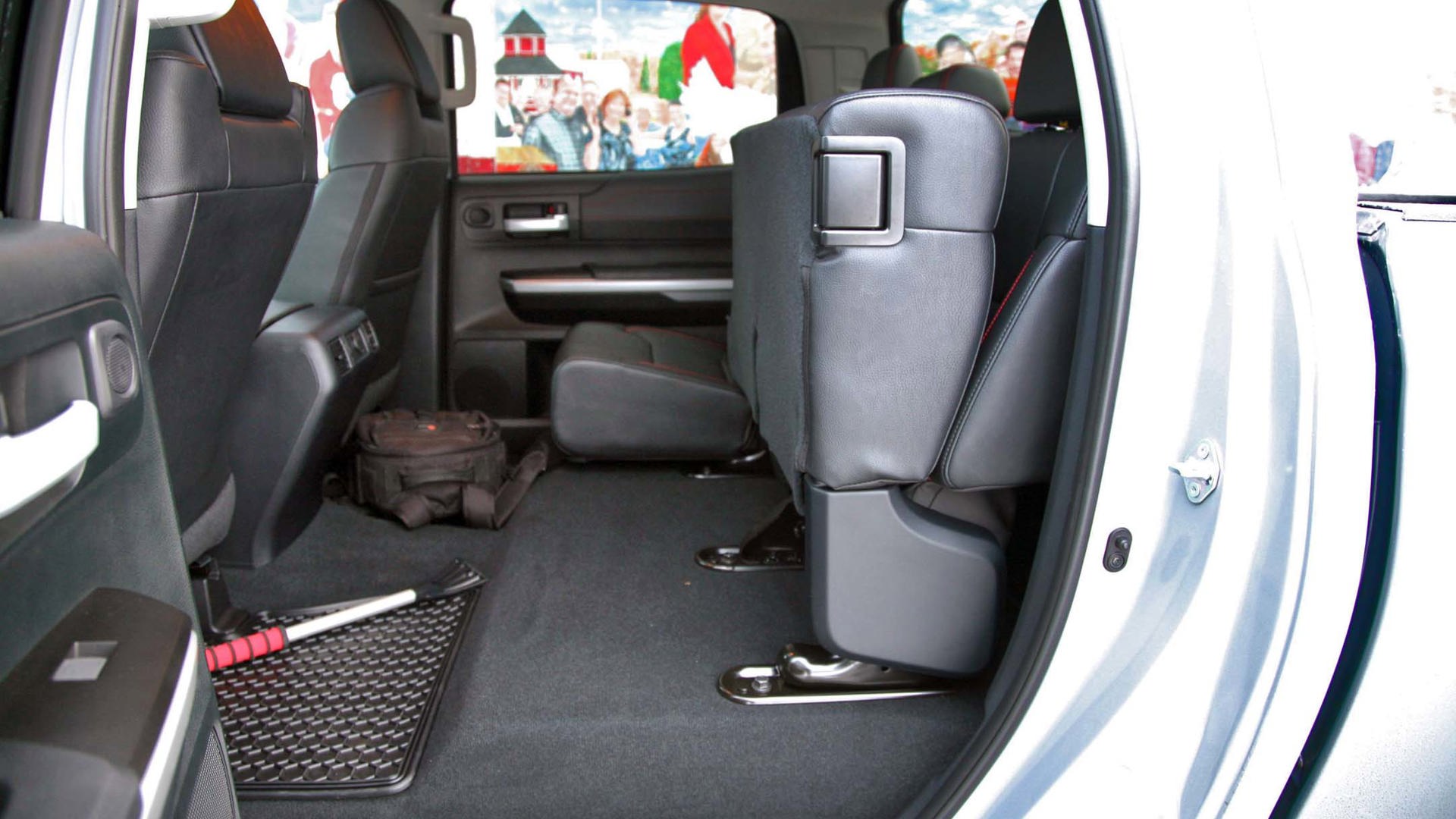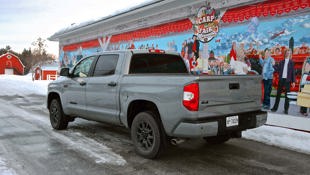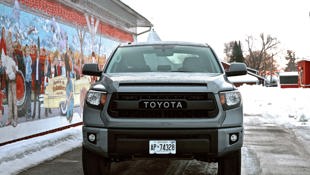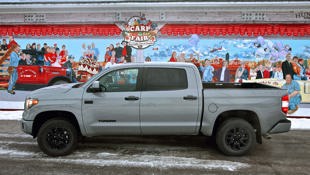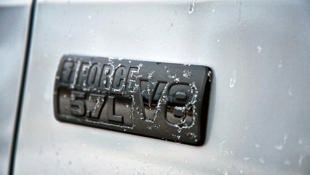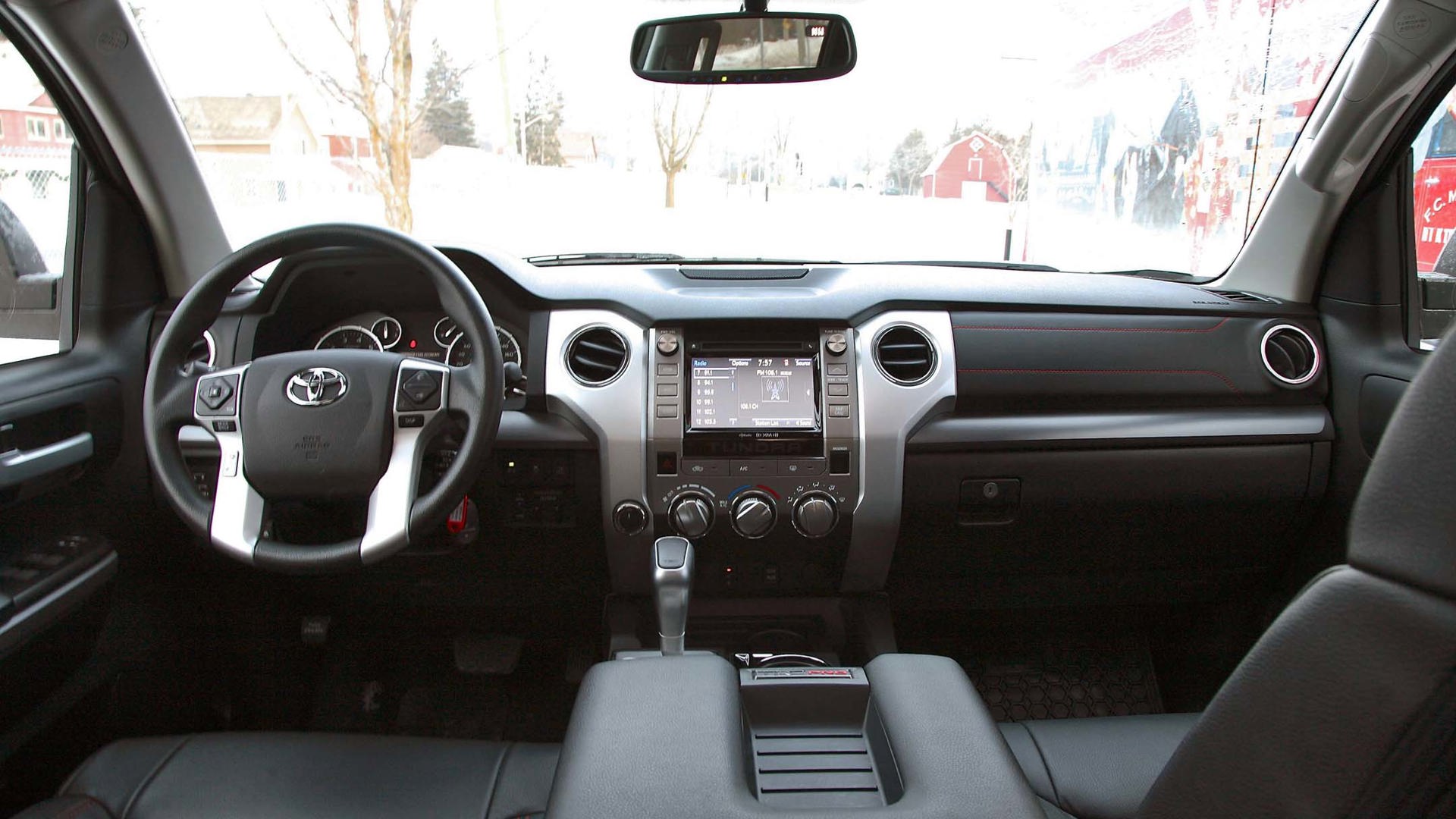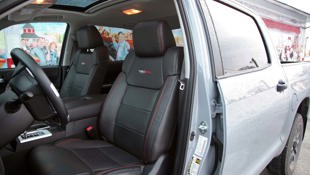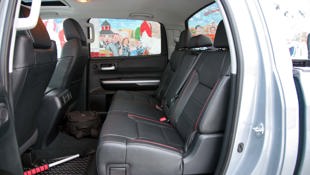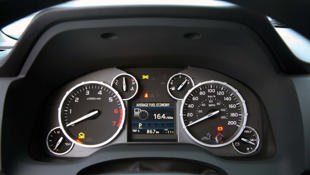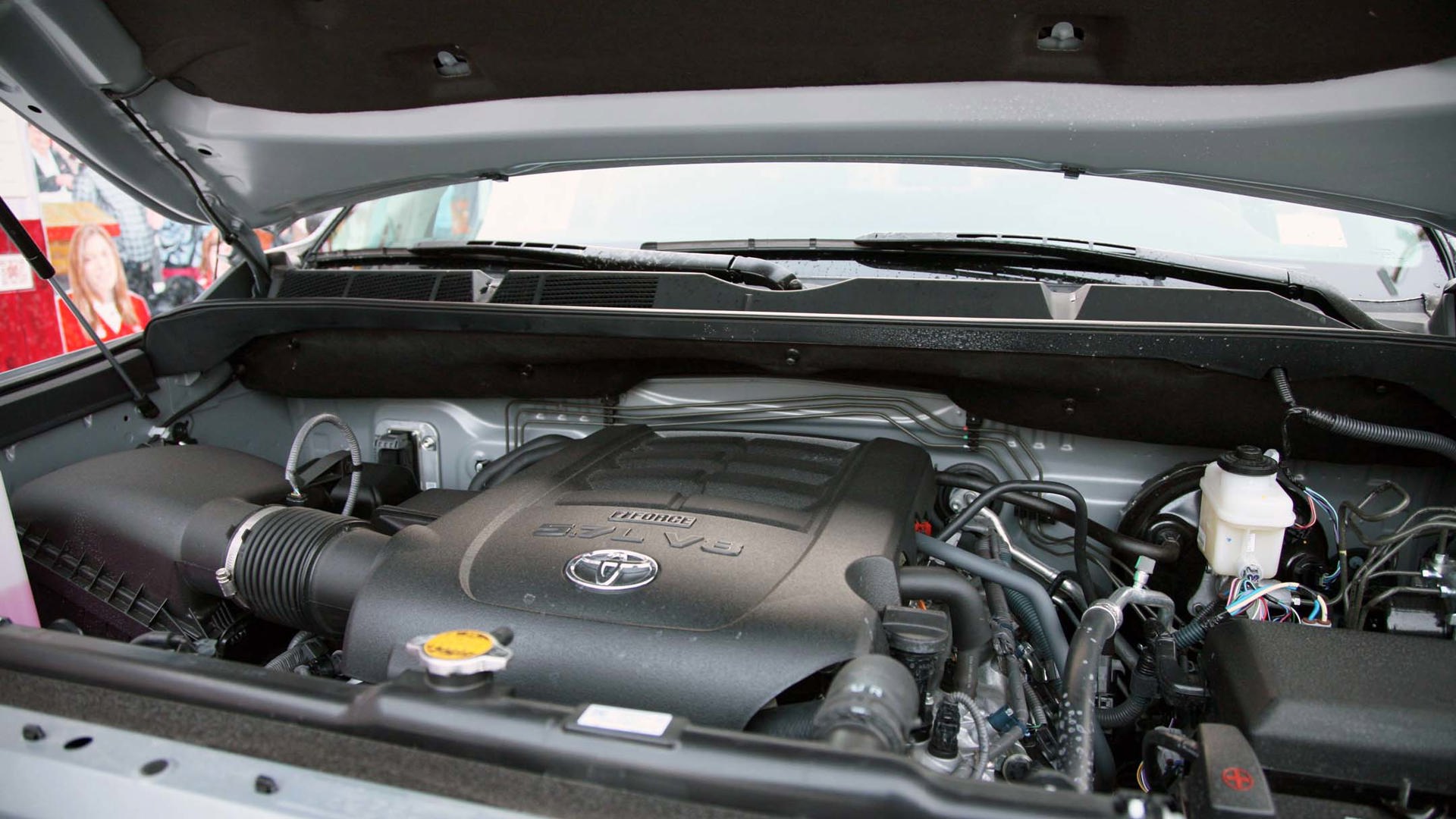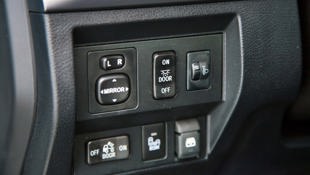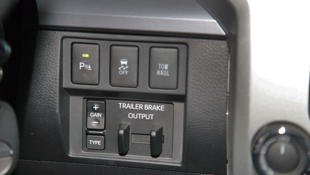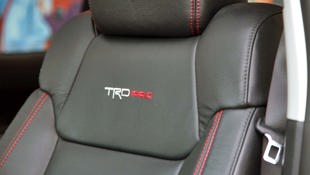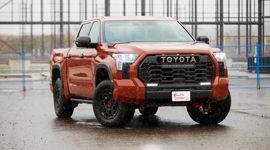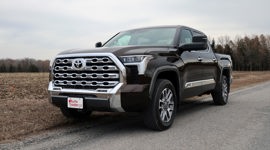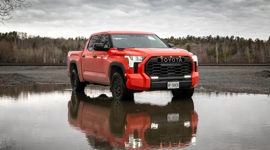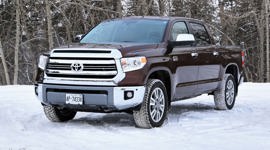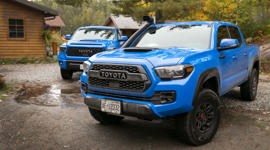 AutoTrader SCORE
AutoTrader SCORE
-
STYLING9/10
-
Safety9/10
-
PRACTICALITY9/10
-
USER-FRIENDLINESS8/10
-
FEATURES6/10
-
POWER8/10
-
COMFORT8/10
-
DRIVING FEEL8/10
-
FUEL ECONOMY6/10
-
VALUE7/10
Here it is, the “other” pickup truck. The big Detroit three – Ford, GM and RAM – have been fighting over truck supremacy for decades; and trying to convince any truck loyalist that their truck may not be as good as another is not worth the pixels those words take up. But Toyota has been making the Tundra now for around 18 years (first introduced in 1999 in North America), and although sales have been good enough for them to keep up the good fight, those figures are still mediocre compared to the big brands.
Trying to convince any truck loyalist that their truck may not be as good as another is not worth the pixels those words take up.
Of course, I’m not forgetting that a Nissan rival exists as well, and their new 2017 Titan is not pulling any punches either, but in terms of the Japanese competition the Tundra has clearly taken the lead. Perhaps it is due to the perceived reliability that the Toyota brand offers; perhaps it was just because they were first (the Titan was introduced in 2003).
Toyota also turned the tables on the typical truck buyer. While the big Detroit three basically offered a million combinations and permutations of each truck, Toyota employed their quality-focused manufacturing system to offer a reduced set of models to get the ball rolling.
Now in 2017, the Tundra is still rolling strong and is now offered in a variety of flavours from basic single cab long box with rear-wheel drive, to a Crewmax cab short box with 4x4 and a variety of choices in between.
My tester was a TRD Pro model – the off-road-focused Tundra, loosely competing with the Ford F-150 Raptor. The TRD Pro is available in Crewmax format (that’s four full doors) or Double Cab, as an option package on top of the standard 4x4 Tundra that starts at $46,680 for the Crewmax. The TRD Pro package bumps that price to a gulp-inducing $60,275 before fees, levies and taxes.
Over top of the standard Crewmax 4x4 Tundra, the TRD Pro package adds the following features and bling: navigation, garage-door opener, auto-dimming rear-view mirror with compass, back-up sensors, TRD Performance dual exhaust and tailpipes, TRD decals and logos, power moonroof, blind-spot monitoring system, heated front seats, black leather seats with red stitching, and a power sliding rear window.
I would argue the above is worth a few thousand dollars, but nowhere near the $14,000 extra for this package, so luckily, there’s more to the TRD package that are harder to see. The true off-road bits include a fuel-tank protector plate, TRD skid plates, Bilstein shock absorbers, TRD remote reservoir suspension kit and 18-inch black alloy wheels with special all-terrain tires. If you are serious about going off-road in your brand-new truck, this rig will do it.
But as a daily driver, to take the kids to school, or to pick up groceries, perhaps it is a little overkill.
I’m short, so the first thing I noticed was the lack of running boards on this model – which makes sense considering its intentions. Second thing I noticed though, was the lack of grab handle on the driver’s side to hoist myself into the seat. Luckily the handle is there for the passengers, so the steering wheel becomes the driver’s anchor.
The next thing I noticed when I stepped inside were the absent items you could reasonably expect in a $60,000-plus vehicle. Items like push-button start (and keyless entry), automatic headlamps and automatic climate control – what am I… a cave man? I couldn’t honestly remember the last vehicle I drove without automatic climate control.
And certainly not one over $60k.
Once I got over what was missing, I started to appreciate what was there. The retractable rear window is cool, the utilitarian looking interior is welcome and the TRD-stitched seating and leather accents are gorgeous. All the controls are basic, but simple and easy to use. Although I prefer a column-mounted shifter, the tunnel-mounted one did not really bother me, as the storage bin between the seats is large and there are enough cup-holders and flat areas to store things.
The back seats did befuddle me though, with a floor that isn’t flat, and with seats that do not flip down, there is very little internal storage for “work” items. The rear seats do flip up, but the space beneath them is no more than a few inches, enough for a snowbrush or some gloves but not much else. Rear legroom on the other hand is massive, so if your priority is carrying passengers, they will be very happy.
The box comes standard with a protective bed liner and flexible rail tie-down system, as well as a dampened tailgate – something the big brands are finally catching up on. The TRD Pro is rated for a payload of 545 kg (1,205 lb) and a towing capacity of 4,399 kg (9,700 lb) and includes an integrated electronic brake controller as standard.
While I’m listing specifications, now is a good time to let you know that if you run this bad boy to empty, you will be going home poor. With a fuel tank capacity of 144 litres, even with a quarter-tank of fuel remaining, you will be well over $100 per fill-up.
A large tank does help the range though, even with the 5.7L iForce engine that produces 381 hp and 401 lb-ft of torque, you should be well into 600-plus km of distance per tank with the six-speed automatic transmission. That’s with a rated fuel economy figure of 18.1 L/100 km city and 13.9 L/100 km highway. I averaged 16.1 L/100 km over my week of mostly highway driving.
There is no mistaking that TRD exhaust system when you fire up the truck: it sounds great, and the burble at idle and up to around 1,500 rpm is heavenly. Unfortunately, it can drone a little bit depending on your speed. If you just want to be incognito, forget it – it’s not subtle in the least. Out on the highway and in the city, road noise with the equipped winter tires was basically nil, and not once during the week did I hear any wind noise.
I was surprised by the handling, throttle response and braking of the Tundra – it drives smaller than it is, and is also easy to park. The suspension can only be described as “truck-like”. It is firm, but not too jarring, yet comfortable when it needs to be. It really is a great blend of capabilities considering the payload and towing capacity, as well as the off-road ability of this truck – I guess there is a reason it is on the pricey side.
The traction control is downright amazing and quick-reacting, without disabling all forward progress. I attempted several times to kick the rear end out in the snow with no luck. Of course, with the system off you can have your fun too! Unfortunately I did not get to haul any heavy items the week I had the Tundra, nor did I get to tow with it, so that will have to wait for another time.
As a daily driving truck I would certainly be happy to have one in my driveway. Before I do though, I would add running boards for ease of ingress and egress and I’d step up to the Limited model at the very least, which provides dual-zone automatic climate control – constantly adjusting those knobs seems minor, but I was constantly switching between too hot and too cold. It’s one area I’d rather the computer take over.
| Engine Displacement | 5.7L |
|---|---|
| Engine Cylinders | 8 |
| Peak Horsepower | 381 hp |
| Peak Torque | 401 lb-ft |
| Fuel Economy | 18.1/13.9/16.2 L/100 km cty/hwy/cmb |
| Cargo Space | N/A |
| Model Tested | 2017 Toyota Tundra TRD Pro |
| Base Price | $46,430 |
| A/C Tax | $100 |
| Destination Fee | $1,760 |
| Price as Tested | $61,885 |
|
Optional Equipment
$13,595 – TRD Pro $13,595
|
|
